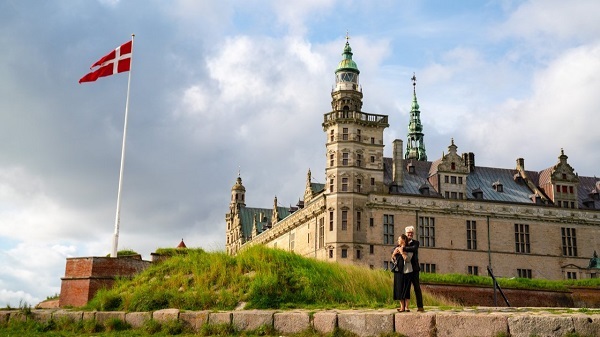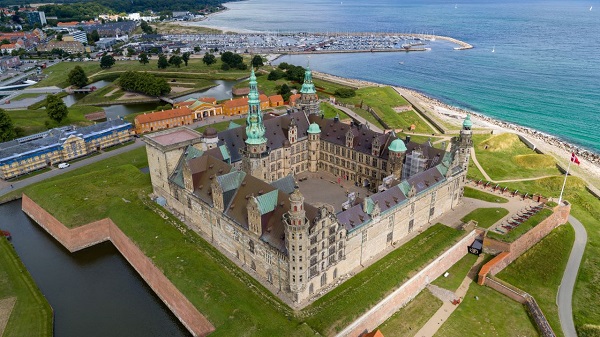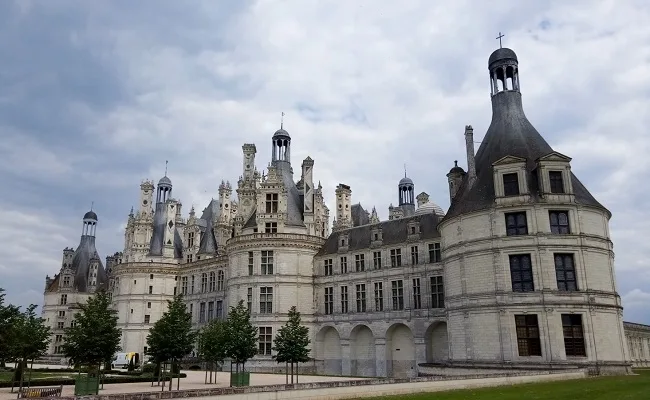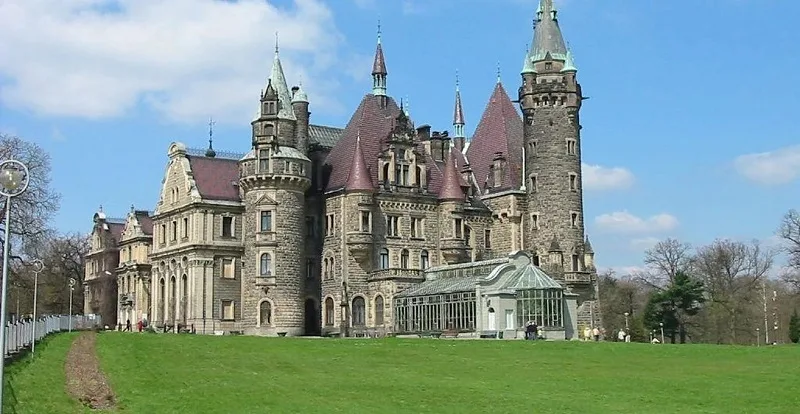
Exploring Kronborg Castle: Denmark’s Historical Jewel
Kronborg Castle, a renowned UNESCO World Heritage site in Denmark, is steeped in history and architectural grandeur. This article explores the castle’s foundation, significant historical events, sieges it withstood, distinctive features, visitor tips, and concludes with its timeless allure.
Foundation and Builders of Kronborg Castle
Founded in the early 1420s by King Eric of Pomerania, Kronborg Castle stands at the strategic point where the Baltic Sea meets the North Sea. The castle was originally named Krogen but was later expanded and renamed by King Frederick II in the late 16th century. The castle’s renowned Renaissance architecture is largely attributed to the Dutch architect Hans Hendrik van Paesschen and later, Flemish architect Anthonis van Obbergen.
Kronborg’s transformation from a fortress to a magnificent castle symbolizes the era’s architectural evolution and Denmark’s prosperity during the reign of King Frederick II.
Historical Significance of Kronborg Castle
Kronborg Castle has been a centerpiece in European history. It played a pivotal role in the Northern Wars and was a symbol of Denmark’s power. The castle’s strategic location allowed control over maritime traffic in the Baltic Sea, asserting Denmark’s dominance in the region.
Perhaps most famously, Kronborg Castle is the setting for Shakespeare’s ‘Hamlet’, bringing literary significance and global cultural interest. This literary connection has made the castle a pilgrimage site for Shakespeare enthusiasts worldwide.
Key Events and Royal Residents
Throughout its history, Kronborg Castle has hosted several Danish monarchs. Its halls have witnessed grand royal ceremonies, pivotal treaty signings, and have served as a military stronghold.
The Sieges and Battles Kronborg Withstood
Kronborg Castle’s strategic importance meant it was central in many military conflicts. It withstood several sieges, most notably during the Dano-Swedish War in the 17th century. The castle’s formidable defenses were tested, but it stood resilient, symbolizing Danish strength and resolve.
Despite these conflicts, Kronborg Castle remained an imposing military fortress and a testament to Danish military architecture. The sieges it endured are now integral chapters in its storied history.
Restoration and Preservation Efforts
Following periods of neglect and damage, particularly after the bombardment by the British in 1807, restoration efforts were undertaken to preserve Kronborg Castle’s historical and architectural integrity.

Architectural Features of Kronborg Castle
Kronborg Castle is an exemplar of Renaissance architecture. Its structure includes imposing towers, grand ballrooms, and intricately decorated chapels. The castle’s strategic design features bastions, casemates, and a series of underground passages, all of which played a role in its defense.
The castle’s interiors are adorned with Renaissance art, ornate tapestries, and period furnishings, offering a glimpse into the life of Danish royalty.
Visitor Tips for Exploring Kronborg Castle
When visiting Kronborg Castle, take time to explore its grand halls, the intricately decorated chapel, and the casemates where soldiers were stationed. Don’t miss the statue of Holger Danske, a legendary figure said to awaken and defend Denmark in times of trouble.
Guided tours offer insightful historical narratives, enhancing the visitor experience. The castle also hosts various cultural events, including the annual Hamlet performances, which are a must-see.
Conclusions: The Enduring Legacy of Kronborg Castle
In conclusion, Kronborg Castle is not just a monument of the past but a living symbol of Denmark’s rich history and cultural heritage. Its architectural beauty, historical significance, and literary connections make it a must-visit destination for anyone interested in exploring the depths of Danish and European history.
Visiting Kronborg Castle offers a unique journey through time, where each stone tells a story of power, art, and resilience.
Popular articles
-
 Beautiful and Exquisite Chambord Palace
Beautiful and Exquisite Chambord PalaceChambord Palace, known as Château de Chambord, in France, stands …
-
 Moszna Castle: A Journey Through Time and Elegance
Moszna Castle: A Journey Through Time and EleganceMoszna Castle, located in the picturesque region of Opole, Poland, …
-
 Exploring Conwy Castle: A Journey Through Time
Exploring Conwy Castle: A Journey Through TimeConwy Castle, a medieval masterpiece nestled in the heart of …
